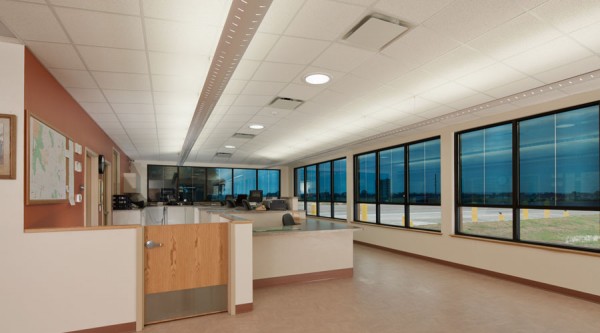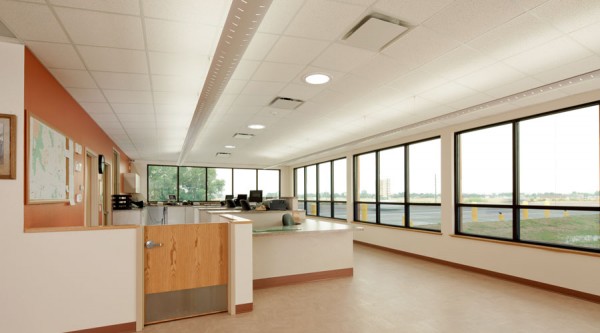Since our last report on “smart windows,” further developments warrant an update.
Smart windows have glass coatings that let varying proportions of light and heat come through them as needed at different times. They change their tint. Think of them as transitional eyeglasses for buildings.


Coatings on window glass, as well as inert gases like argon and xenon filling the space between panes, offer choices suitable for different climates and for different sides of the house. But most high-tech windows in use today are stuck with one characteristic year-round.
Windows on sunny sides of the house in temperate zones usually need mechanical shading systems in order to allow plenty of solar heat gain when the building is using heating, but to block heat gain when it will make the space too hot. Diverse shading systems offer plenty of choices, with trade-offs among expense, wear-and-tear failure, blocking the view, or simply cluttering the look of glass curtain walls.
“Dynamic glass” windows with SageGlass coatings have been on the US market for ten years as models with two settings that are switchable with a weak DC current. (They are wired—unlike photochromic eyeglasses which react directly to light.) On “clear,” they let 49 percent of the light and heat through—about the same as an average low-e double-glazed window—and on “deep blue,” they let 9 percent pass. They can be set up for manual, timed, or sensor-automated switching.
In 2010, SageGlass was acquired by one of the world’s largest construction industry companies, Saint-Gobain of France. At the GreenBuild expo in November 2012, a well-funded new California company, called View, showed off a competing product that tints gradually, while SageGlass showed off new windows that tint not only gradually but to different tints within the same pane. Saint-Gobain and View are suing each other for patent infringement. Each is building a large electrochromic glass factory in the U.S.
These windows are said to cost around twice as much as static high-performance glazing in homes, and around 50% more in commercial buildings. High-performance glazing already has a cost premium that takes several years to pay for itself, and unfortunately no one knows how long dynamic windows will hold up in the real world, so it’s very hard to calculate their payback time.
Here comes the exciting part: even smarter windows, for less.
Lawrence Berkeley National Laboratory has been reporting steady progress on different coatings that not only change their emissivity, but separately change it for heat and for light. Emissivity at the two end point settings is similar to the numbers for SageGlass, but the intermediate setting would block 90 percent of infrared (heat) while blocking only around 40 percent of visible light. As with SageGlass, electrical voltage does the switching.
The lab has spun off a company named Heliotrope Technologies to bring the technology to market. Delia Milliron, the research group’s director, has said that along with treating heat and light differently, an equal motivator for her new coatings is that they could be much cheaper than the ones now on the market. Her recent (successful) grant proposal to the DOE begins with the words “Low Cost Solution.”
Meanwhile, Dutch company Peer+ is making something called Smart Energy Glass in which the variable coating begins generating electricity when it darkens. An additional “privacy” setting turns the glass milky. At best, this could get radically exciting, but it all depends on the price, the durability, and the electric output, none of which are clear yet. It sounds like the short-term goal is merely to generate enough electricity to power the window’s own electrochromic switching.